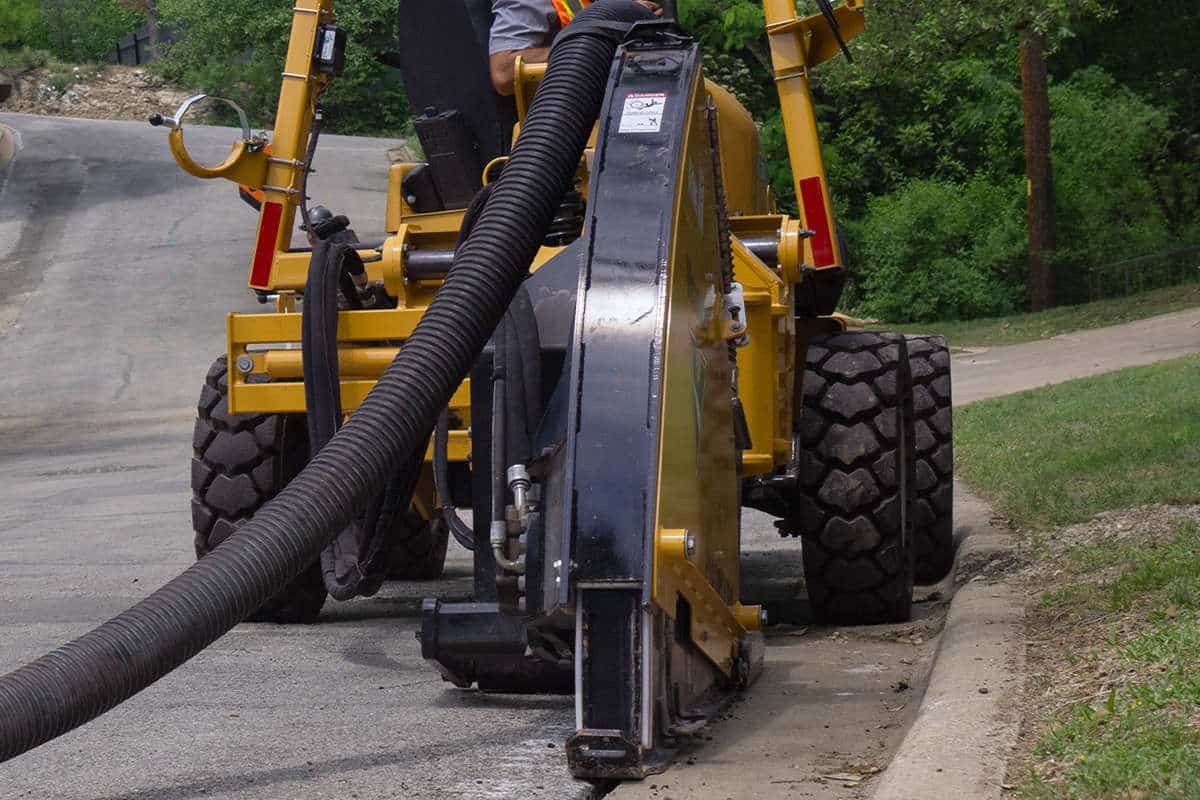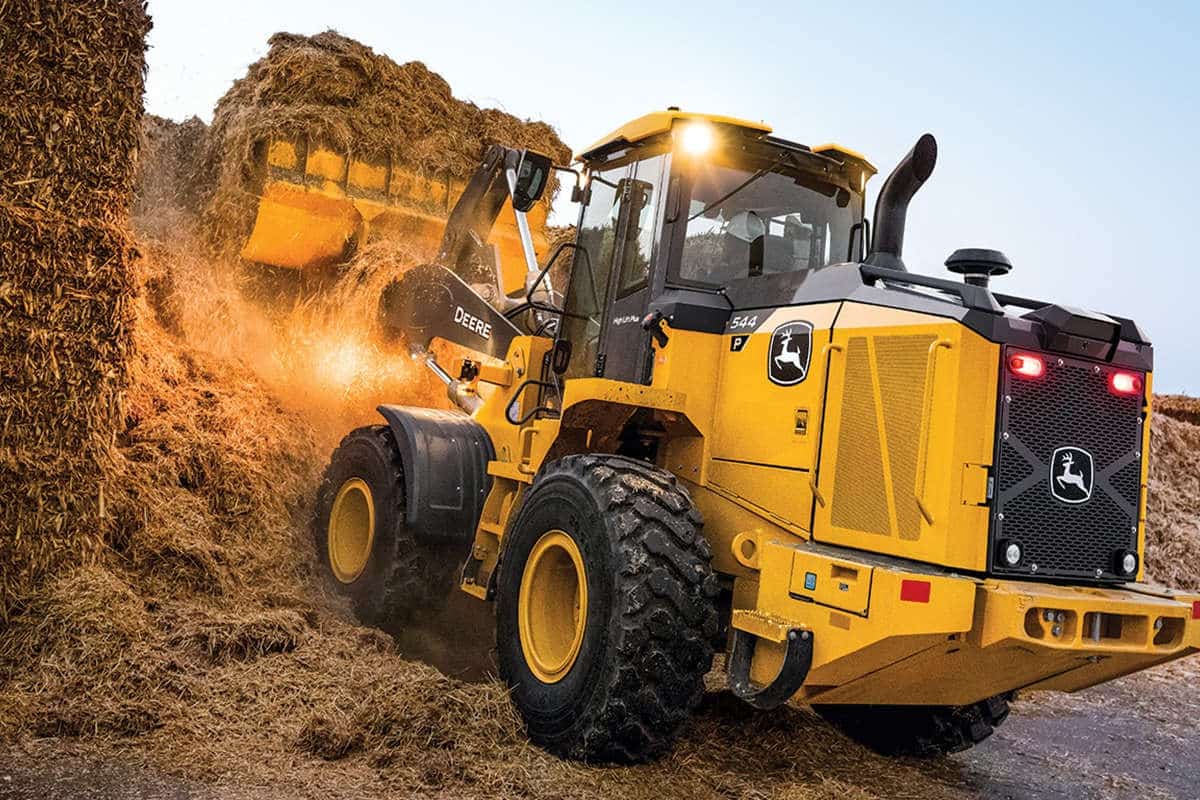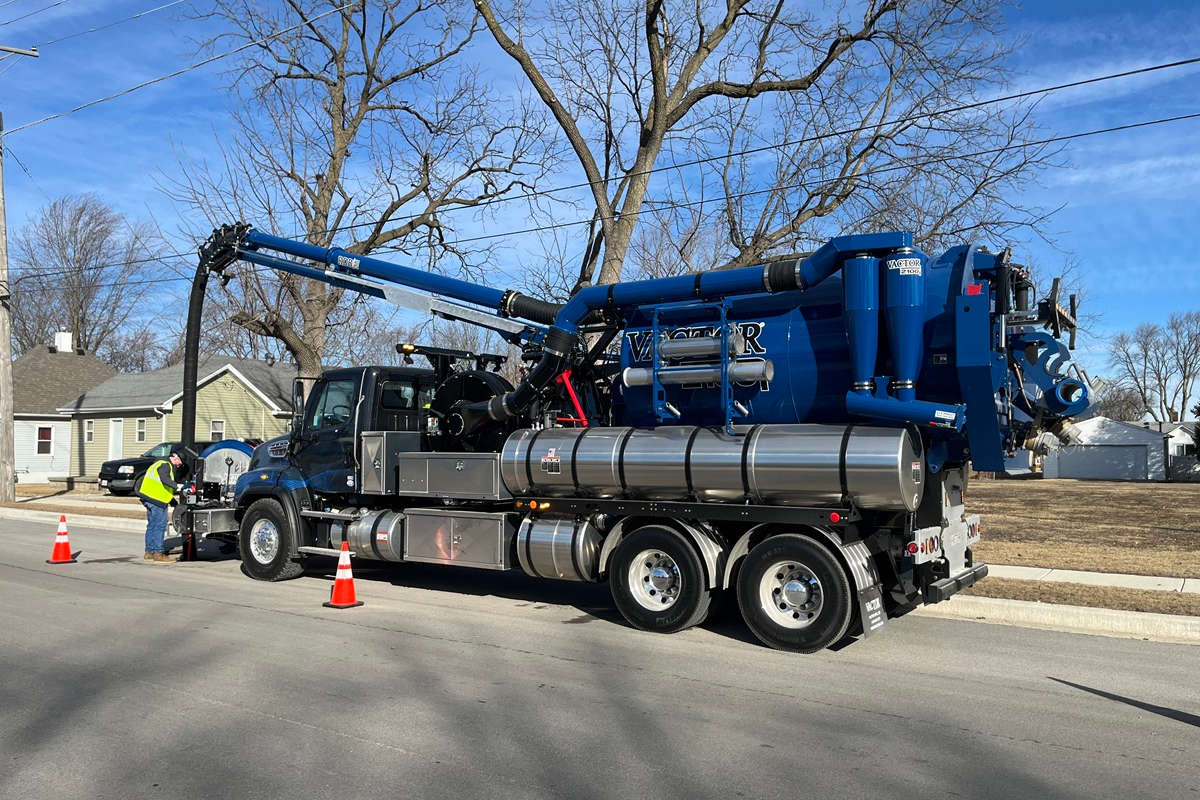Air Compressors Lend a Versatile Hand on Jobsites
Squeezing air into a chamber and then releasing it for work applications is what medium-size commercial air compressors do. The portable compressors are an everyday power unit with familiar and mature technologies. Utility supervisors and contractors depend on the units to clear underground lines, power jackhammers, paint highway lines and a host of other tasks.
“Air compressors are not like skid steer loaders that you sit in and operate,” says Josh Goodman, Assistant Product Marketing Manager for Doosan Portable Power. “You take one of our machines to a jobsite, hook it up and turn it on and you may not see it again until it runs out of fuel or at the end of the day.”
In other words, the portable compressor is background noise for whatever else is going on at a worksite, systematically keeping working hoses filled with kinetic energy. Manufacturers emphasize different features, but dependability is chief among them. Doosan Portable Power’s portable compressors, for example, are tested by making 865 circuits around a “bump course” to ensure the integrity of the unit and the integrated trailer that carries it.
Prototype engines on the Doosan P185 and C185 portable units endured 2,000-hour endurance tests, interrupted only briefly to change the oil at recommended intervals. They were run at 2,600 rpm, then slowed to an idling 1,700 rpm, then run back up to 2,600 rpm — back and forth for the duration of the test. “We helped design the machine to run all day long under strenuous conditions,” says Goodman.
Atlas Copco compressor units are similarly rugged. The company’s Product Manager for Low-Pressure Compressors, Rich Elliott, says reliability is the industry standard and following the guidelines of each engine manufacturer helps the cause. “The manufacturers have recommended service intervals that contractors should follow to keep warranties valid and achieve a long service life. With proper and regular maintenance, most compressors can last more than 15 years.”
Mid-size compressors in the Atlas Copco lineup include the XAS185, which, like competing brands in that range, produces 185 cfm of airflow at a pressure of 100 lbs per square inch. The unit is powered by either a Caterpillar or Kubota 49-hp Tier 4 Final engine. Forty-nine horsepower is the industry standard for this size compressor because it avoids engine registration regulations in California that start at 50 hp.
Atlas Copco also offers a smaller model, the XAS90, which generates 90 cfm at 100 psi. That is large enough for a single pneumatic tool, which might be sufficient for some end-users. It has a 24-hp Tier 4 Final Kubota engine and offers better fuel consumption and a lower rental rate.
Doosan’s C185 and P185 compressors come with a variety of options to accommodate customer needs. The C185 is available with a Deutz diesel engine or a Kubota gasoline engine, the latter offered as an alternative to more costly Tier 4 Final diesel units. The C185 was designed for the rental market and offers slightly fewer options, but the same performance.
The P185 (also a 185 cfm at 100 psi unit) has a Doosan diesel with 50 years of engineering experience behind it and rides on 15-in. tires, instead of the 13-in. tires on the C185. The P185 has a user-friendly digital display and readouts available in three languages — English, Spanish and French. It also boasts an 8,700-cu-in. tool box, one of the largest on the market. “We see a lot of appreciation expressed by our customers for that tool box,” Goodman says.
All of these compressors squeeze air into a storage tank using rotary screws. It is the most common and efficient compression mechanism for commercial units of this size. The screws typically are half a human hair apart at the squeeze point with the captured air lightly oiled for lubrication. Some commercial manufacturers, such as Chicago Pneumatic, do offer piston-type compressors for lower-pressure applications.
What criteria should renters or buyers of these air compressors have in mind when they select a machine? For starters, they should consider how the unit will be used. “For instance, a contractor might use a 90-cfm compressor to blow out sprinkler systems for winter maintenance, but requires something with more power when the crew needs to operate multiple pneumatic tools,” says Elliott. “Selecting a unit too small for future applications is a common mistake.”
An undersized unit is not a danger to itself, says Doosan’s Goodman, but performance will suffer. “Add multiple tools to a unit too small and you will see a downgrade in performance. Or if you are running a 100-ft hose to sandblast, you can see a drop in pressure. Friction [of the hose] reduces pressure.”
Elliott cites the example of a concrete dowel drill with three drill motors. “That might require 300 cfm at 100 psi for proper operation. If a contractor tries to use a compressor that produces less than 300 cfm, the drilling process will be extremely slow, and the compressor might require more frequent maintenance due to it running at 100 percent capacity all the time.”
Conversely, using too large a compressor unit can create the unwanted consequence called “wet stacking.” Wet stacking occurs, says Elliott, when the amount of diesel fuel being put into the engine doesn’t fully combust because there isn’t enough heat inside the cylinder to burn all of the fuel. “This typically happens when contractors use a compressor that has too high of a cfm for the application — such as using a 400-cfm compressor to power a single jackhammer that requires 80 cfm.”
All the mobile units are enclosed for overnight security and protection from the elements. Each Atlas Copco compressor is housed in a polyethylene “Hardhat” canopy, one of the toughest in the industry. Doosan Portable Power’s compressor hood opens in two positions — partially rising so an operator can access tools, but opening to a 90-degree position for checking engine fluids and diagnostics.
To ensure safety of the operator and of the machine, manufacturers incorporate protective features. High-pressure release valves blow if something gets stopped up and minimum-pressure valves shut down flow if pressure falls below a stipulated minimum. The Atlas Copco compressors have an engine control unit with a display that, among other things, announces how much time is left before a machine reaches a scheduled service interval. If a unit reaches that interval untouched, it will not start until it is serviced.
Doosan Portable Power engineers also encourage regular maintenance via a spin-on-and-off oil separator, which minimizes oil in the air line. “The separator often is situated in the reservoir tank, so a technician has to access it there, exchange the filter and then torque down the components again,” says Goodman. “With our design, maintenance is just like changing an oil filter on your car. We’re working to make maintenance as easy as possible.”
Consequently, the company is seeing more filter sales and fewer machine failures.
Manufacturers also typically offer environmental protection in the engineering of the transporting frames for their portable units. In the event of a ruptured line or other source of spilled oil, the frames are designed to contain the spillage. This can be critical when the compressor is operating in an environmentally sensitive area.
Giles Lambertson is a Freelance Writer for Utility Contractor. Tags: Atlas Copco, Doosan, January 2016 Print Issue






